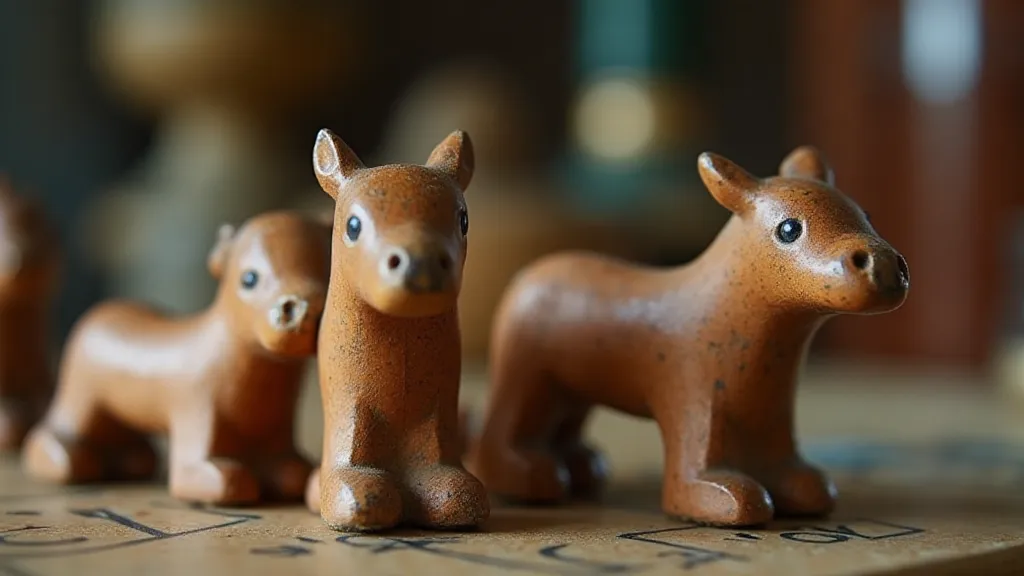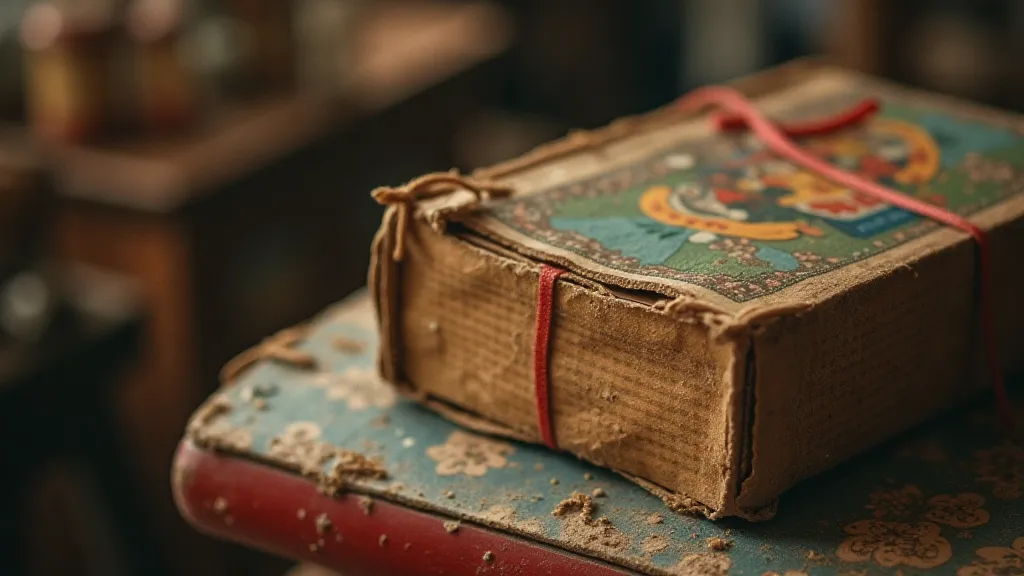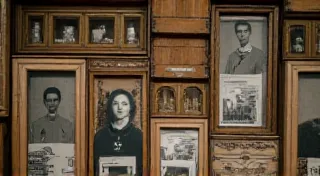The Phantom Mechanic: How Unintended Consequences Shaped Board Game Evolution
There’s a peculiar melancholy that clings to forgotten board games. Not just the dust and brittle cardboard, but a deeper sense of unrealized potential. We collect them, yes, marveling at the art deco fonts and the whimsical wooden pieces, but sometimes, we’re really collecting ghosts. Ghosts of player strategies, emergent narratives, and design choices born from a spark of ingenuity – and often, from delightful, unforeseen misinterpretations. This isn't just about preserving games; it's about understanding how the act of play itself, the inevitable twisting and shaping of rules by human hands, has profoundly influenced the tabletop landscape.
Think of an antique accordion. It’s a machine built with precision, each reed carefully calibrated to produce a specific note. But an accordion in the hands of a skilled (or even reckless) player becomes far more than the sum of its parts. It becomes a vehicle for expression, for improvisation, for creating something entirely new and unexpected. Similarly, board games, despite their carefully constructed rules, are subject to the whims of players. These ‘phantom mechanics,’ the unintended consequences of rule interpretations and player exploits, are often the most interesting, and ultimately, the most impactful.

The Case of the Reinterpreted Roll
Consider “Tiddlywinks,” a seemingly innocuous game dating back to the late 19th century. The basic rules are simple: flick pieces across a board, attempting to land them in designated areas. Yet, what began as a charming parlor game quickly morphed into a competitive sport with complex strategies involving “spins,” “kicks,” and elaborate techniques designed to manipulate the pieces with astounding precision. The original designer, Frederic Hesketh, likely envisioned a relaxed, family-friendly pastime. He could scarcely have anticipated the rise of the Tiddlywinks Association of America, complete with formal competitions and intricate rule books expanding far beyond the initial concept. This wasn’s a failure of design; it was a testament to the human desire for complexity and mastery. The game itself was a seed that blossomed into something entirely new, driven by the actions of players seeking an edge.
The early 20th century saw a surge in elaborate dexterity games – 'Gravy,' 'Chutes and Ladders’ (originally ‘Snakes and Ladders’), ‘Pick-Up Sticks’ – demonstrating a cultural fascination with skill and chance. These games weren’t just about rolling dice; they were about mastering a physical action, a skill that was then layered onto the game's strategic elements. Each manipulated piece, each carefully aimed flick, was a rejection of the predetermined and an embrace of player agency. This desire for agency is a persistent thread running through the history of tabletop gaming. The fascination with how components— the very building blocks of these games—evolve and take on new significance adds another layer to their story; it’s a narrative that resonates deeply, exploring how the crafting and materials of these games themselves contribute to their enduring appeal. This isn’t just about the feel of the wood or the quality of the cardboard; it’s about the stories those materials tell.
The Unforeseen Narrative
Beyond simple rule bends, players frequently create entirely new narratives within existing game frameworks. "Dark Tower," Milton Bradley’s 1932 game, intended to be a wholesome race to the titular tower, quickly saw players develop elaborate backstories for their tokens. Each player might invent a unique motivation for their character's journey – a desperate escape, a noble quest, a vengeful pursuit. These personal narratives weren’t part of the intended gameplay, yet they deepened the experience, transforming a simple race into a miniature epic. The rules provided the scaffolding, but the players built the story.
I remember once stumbling across an old copy of "Fireball Ascent," a game of aerial combat from the 1950s. The rules were straightforward: maneuver your planes across a board, attempting to knock opponents out of the sky. But the players I was gaming with immediately started roleplaying. They created fictional pilots, assigned them nicknames, and argued about historical aviation tactics. Suddenly, the game wasn’t just about scoring points; it was about recreating the thrill and danger of wartime flight. The game’s inherent asymmetry – some planes were faster, others more resilient – lent itself perfectly to this kind of emergent storytelling. The original designers may not have intended for anyone to engage in such elaborate performance, but it reveals a fundamental human need to invest themselves in a world, even a simulated one. This innate desire to weave tales and explore imagined realities is a powerful force, one that frequently reshapes even the most structured of game experiences; it's a phenomenon often explored through a closer look at how narrative threads unravel and reshape the essence of forgotten games. The stories we tell ourselves, and each other, are fundamental to our understanding of the world – and, apparently, to our enjoyment of board games.

The Craftsman’s Hand and the Player’s Touch
Looking at these old games, it’s impossible not to appreciate the craftsmanship. The thick cardboard, the solid wooden pieces, the intricate artwork – these were objects built to last. And they did. They lasted through generations of players, each adding their own layer of history to the game's narrative. The wear and tear isn't a sign of neglect; it's a testament to the game’s enduring appeal. These games were often cherished possessions, passed down as family heirlooms. Restoring them isn't simply about repairing physical damage; it’s about preserving a piece of cultural history.
Collecting these forgotten games isn’t just about acquiring artifacts; it’s about understanding the evolution of play. It’s about recognizing the role that players have had in shaping the tabletop landscape. Restoration often involves careful consideration – do you replace missing pieces with modern reproductions, or do you preserve the imperfections, the marks of countless hands? The answer often lies in respecting the game's history, acknowledging the countless stories that have been played out within its confines. Finding original rulebooks, particularly those with handwritten notes or annotations, can be especially rewarding, offering a glimpse into the strategies and interpretations of past players. There’s a certain melancholy beauty in these fragments of a forgotten past, a reminder that even the most carefully designed systems are ultimately subject to the unpredictable forces of human creativity. Beyond just the tangible objects, it's the way games can evoke powerful emotions and memories that truly distinguishes them. It's a concept that extends beyond simple nostalgia, looking at the emotional resonance of forgotten games, and the way they connect us to the past and to each other.
The legacy of the designers often gets overshadowed by the ingenuity of the players. The designer lays the groundwork, creates the framework, but it is the players who truly breathe life into the game, transforming it into a shared experience, a collective creation. The act of play isn't a passive reception of rules; it's an active engagement, a collaborative improvisation. And that's what makes board games so endlessly fascinating. It’s a dance between intention and interpretation, between the creator’s vision and the player’s imagination.
Consider the rise of wargames, for example. Starting with simple historical simulations, these games quickly evolved into complex systems with intricate rules and detailed maps. But it was the players who transformed these simulations into narratives of conflict, creating characters, inventing strategies, and crafting elaborate campaigns. The game wasn't just about moving pieces on a board; it was about recreating the drama and complexity of war.
And it’s not just about wargames. The same phenomenon can be observed in countless other genres – from cooperative games to competitive games, from abstract games to thematic games. Players invariably find ways to bend the rules, to create new strategies, to invent new narratives. And in doing so, they enrich the game, making it more engaging, more meaningful, more memorable.

The essence of a great game isn't just about the rules; it's about the potential for play. It's about the freedom to improvise, to experiment, to create. It's about the joy of shared experience, the thrill of discovery, the satisfaction of mastery. And that’s something that no designer can ever fully control. The true magic of board games lies in the unpredictable and often delightful ways in which players shape their own experiences.
Ultimately, the ‘phantom mechanic’ isn’t a bug; it’s a feature. It's the essence of what makes board games so captivating. It’s the constant interplay between the designer’s intent and the player’s imagination. It’s the knowledge that every game is, in a sense, a collaborative creation, a testament to the enduring power of play.





